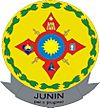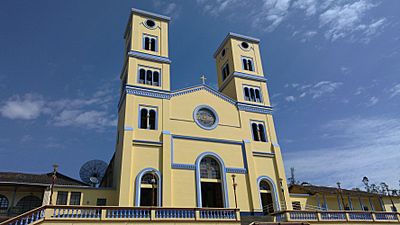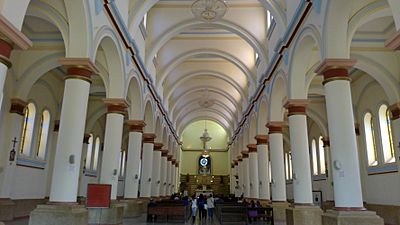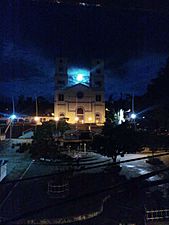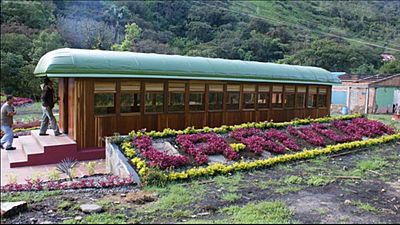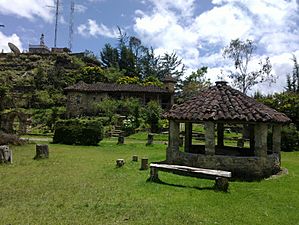Junín, Cundinamarca facts for kids
Quick facts for kids
Junín
(Nuestra Señora de la Concepción de) Chipazaque
|
|||
|---|---|---|---|
|
Municipality and town
|
|||
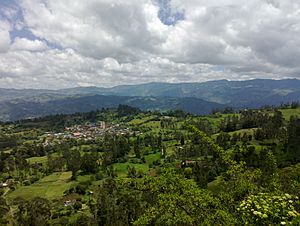
View of Junín
|
|||
|
|||
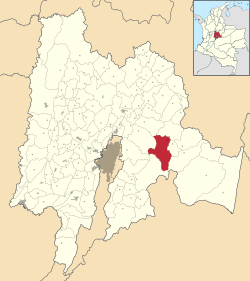
Location of the municipality and town of Junín in the Cundinamarca Department of Colombia
|
|||
| Country | |||
| Department | |||
| Province | Guavio Province | ||
| Founded | 13 August 1550 | ||
| Area | |||
| • Municipality and town | 337 km2 (130 sq mi) | ||
| • Urban | 2.97 km2 (1.15 sq mi) | ||
| Elevation | 2,300 m (7,500 ft) | ||
| Population
(2015)
|
|||
| • Municipality and town | 8,610 | ||
| • Density | 25.55/km2 (66.17/sq mi) | ||
| • Urban | 998 | ||
| Time zone | UTC-5 (Colombia Standard Time) | ||
Junín is a town and a type of local government area called a municipality in Colombia. It is located in the Guavio Province, which is part of the Cundinamarca region. The main part of Junín sits high up at about 2,300 meters (7,500 feet) above sea level. This area is in the eastern part of a large plateau called the Altiplano Cundiboyacense.
Junín shares its borders with several other towns. To the north, it is next to Gachetá and Guatavita. To the east, you'll find Gama and Gachalá. South of Junín is Fómeque, and to the west are La Calera and Guasca.
Contents
What's in a Name? The Story of Junín
Junín used to have a different name: Chipazaque. This old name tells us about the land's history. It means the area was shared between two very important leaders of the Muisca Confederation. These leaders were called the zipa and the zaque.
In the ancient Muysccubun, Chipazaque could mean "our father the zaque" or "a special connection between the zipa and zaque".
The name Junín was given to the town in 1861 by a person named Tomas Cipriano de Mosquera. He chose this name because the green valleys of the area reminded him of the Pampa de Junín in Peru. This place in Peru was famous for the Battle of Junín, a big battle in history.
A Look Back: Junín's History
Long before the Spanish arrived, the green hills of Junín were known as Chipazaque. This land was a shared territory. It belonged to the zipa, who was the leader of Bacatá, and the zaque, who was the leader of Hunza. These two leaders were very powerful in the Muisca Confederation.
In 1550, the Spanish explorers reached this area. They then founded the modern town of Junín.
How People Make a Living in Junín
The main ways people earn money and support themselves in Junín are through a few key activities:
- Agriculture: This means farming, growing crops like potatoes, corn, and other vegetables.
- Livestock Farming: This involves raising animals such as cows, pigs, and chickens.
- Tourism: People visit Junín to enjoy its natural beauty and learn about its history.
Gallery
See also
 In Spanish: Junín (Cundinamarca) para niños
In Spanish: Junín (Cundinamarca) para niños



